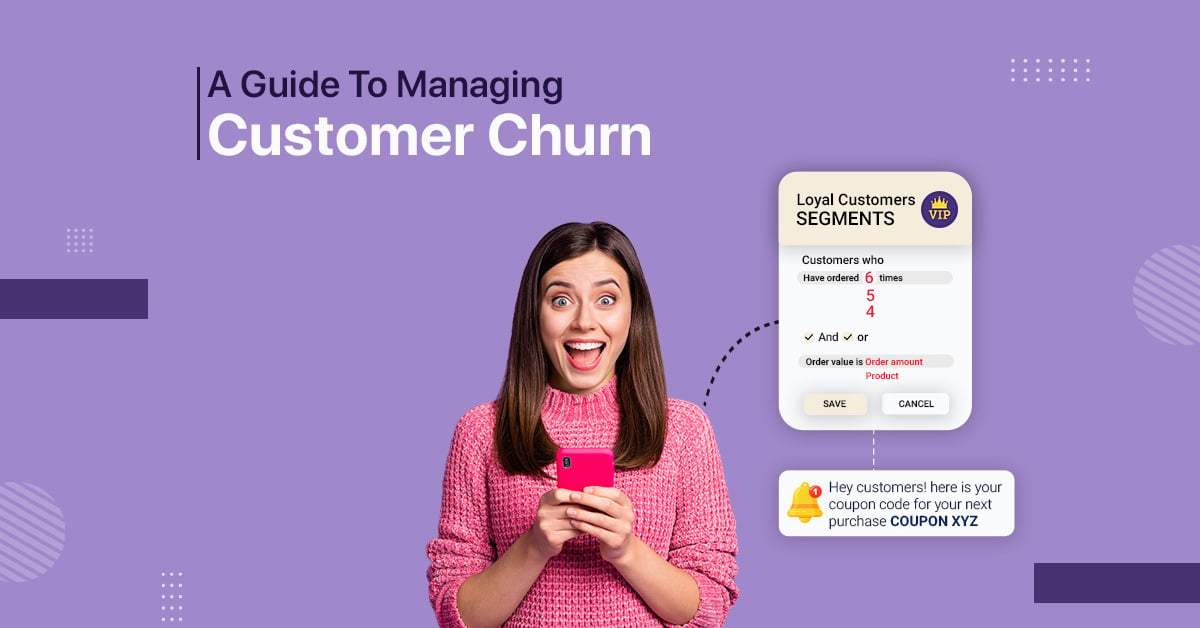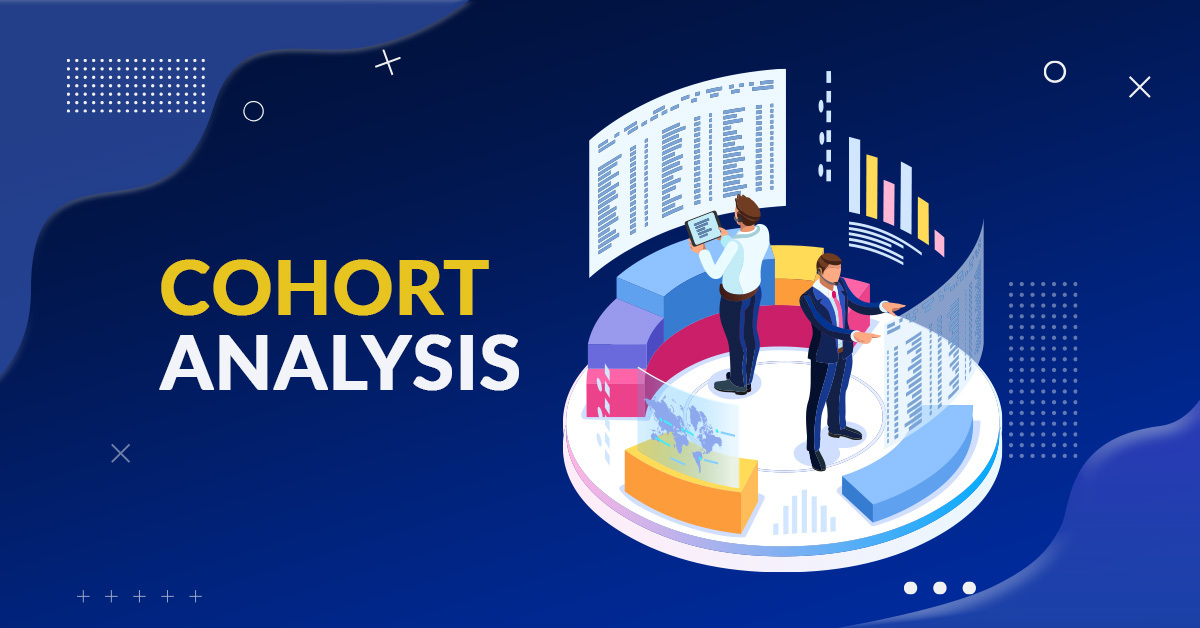Direct-to-Consumer (D2C) brands operate in a highly competitive space where it’s crucial to attract new customers and retain them. Customer loyalty plays a significant role in the success of a D2C brand.
According to a report by McKinsey, loyal customers are five times more likely to make a repeat purchase and four times more likely to refer a friend to a brand than new customers.
To maintain customer loyalty, it’s crucial to have an effective churn management strategy in place. In this article, we’ll discuss the importance of customer loyalty, understand customer churn, and provide a guide to effective churn management for D2C brands.
We’ll also take a look at Wigzo, a powerful marketing automation and customer retention tool that can help D2C brands in their churn management efforts.
Understanding Customer Churn
Customer churn is simply the percentage of customers who disengage with a brand during a specific period. It can happen for several reasons, such as dissatisfaction with the product or service, better alternatives available in the market, or changing customer needs. Understanding customer churn is essential for D2C brands as it impacts their revenue and growth.
As per a study by Bain & Company, a 5% increase in customer retention rate can lead to a staggering 25% increase in profit. There are two types of churn for D2C brands – voluntary churn and involuntary churn.
- Voluntary churn happens when customers cancel their subscriptions or stop using the product or service by choice.
- Involuntary churn occurs due to reasons beyond the control of the customer, such as payment failure or account expiration.
Analyzing Customer Behavior
Collecting customer data and identifying key metrics is the first step toward developing an effective churn management strategy. D2C brands should use data analytics tools to analyze customer behavior, understand their needs and expectations, and segment them accordingly. Segmentation helps target specific customer groups with personalized marketing messages and offers.
As per a report by Epsilon, personalized emails have a higher open rate and click-through rate than non-personalized emails. This is where the power of personalization and email marketing automation comes in!
For instance, with Wigzo, you can set up custom triggers and email flows that keep your customers engaged and maximize conversions – from automated welcome sequences to cart recovery reminders and surveys; this is the one tool you will need to crack the email marketing code.
Developing a Churn Management Strategy
To develop an effective churn management strategy, D2C brands should define their goals and objectives, identify potential churn points, and create a proactive and reactive churn management plan.
A proactive churn management plan involves taking preventive measures to reduce the likelihood of churn, while a reactive plan involves responding to churn when it occurs. That essentially means cracking the churn management analytics.
As per HubSpot, companies that respond to customer complaints on social media have a higher customer retention rate than those that don’t respond. This indicates social signaling – something that inspires confidence in people that a robust online presence and reputation is in their best interest for any transaction.
Best Practices for Churn Management
Improving customer service and support, personalizing the customer experience, offering loyalty programs and rewards, reducing customer effort, and encouraging customer feedback and engagement are some of the best practices for churn management. D2C brands should invest in technology and tools that can help them implement these practices effectively.
According to a report by Accenture, 75% of consumers are more likely to purchase a brand that recognizes them by name, makes purchase recommendations, or knows their purchase history.
A customer data platform like Wigzo can help you master this. You can break down your audience into particular cohorts based on their past purchases and interaction with your e-commerce website. You can then send them targeted campaigns to maximize subscribers and conversions.
E.g., Colder prospects can be targeted with free trial offers, and high LTV customers can be given exclusive discounts depending upon their past purchase history.
Measuring and Analyzing Churn
Measuring and analyzing churn is critical to the success of any churn management strategy. D2C brands should use metrics such as churn rate, CLTV, and customer acquisition cost to track their churn and understand the impact of their churn management efforts. Analytics tools can uncover patterns and trends in customer behavior that can help improve churn management strategies.
It is a general observation that D2C companies powered by data-driven marketing are six times more likely to retain customers than those that don’t.
What will be Your Churn Management Strategy?
Effective churn management is essential for D2C brands to maintain customer loyalty and drive growth. By understanding customer behavior, developing a proactive and reactive churn management plan, implementing best practices, and measuring and analyzing churn, D2C brands can reduce their churn rate and improve customer retention.
One tool that can help D2C brands in their churn management efforts is Wigzo. Wigzo is a powerful marketing automation and customer retention tool that enables D2C brands to deliver personalized messages and offers to their customers based on their behavior and preferences.
Wigzo’s robust suite of marketing automation features includes:
- Segmentation: Wigzo’s segmentation feature allows D2C brands to segment their customers based on their interaction, preferences, and demographics. This enables brands to deliver personalized messages and offers to specific groups of customers.
- Email Marketing: Wigzo’s email marketing feature enables brands to deliver personalized emails to customers based on their behavior and preferences. This helps in improving email open and click-through rates.
- WhatsApp Automation: With Wigzo’s WhatsApp automation, brands can bring their store to customers’ favourite communication channel. This makes it easier for customers to interact with the brand and enhances the overall customer experience.
- Push Notifications: Wigzo’s push notification feature enables brands to send personalized push notifications to their customers based on their behavior and preferences. This helps in increasing engagement and retention.
- Onsite Notifications: Wigzo’s onsite notification feature enables brands to deliver personalized messages to their customers based on their real-time behaviour. This helps in improving engagement and retention.
- Retention Booster: Wigzo helps brands in engaging customers from pre-purchase to post-purchase and mapping customer journeys to identify drop-offs. This helps in removing the bottlenecks and improving customer retention.
Effective churn management is a critical metric for the success of D2C brands. By understanding customer behavior, developing a proactive and reactive churn management plan, implementing best practices, and measuring and analyzing churn, D2C brands can reduce their churn rate and improve customer retention.
Wigzo is a powerful tool that can help D2C brands in their churn management efforts by enabling them to deliver personalized messages and offers to their customers based on their history and preferences.













